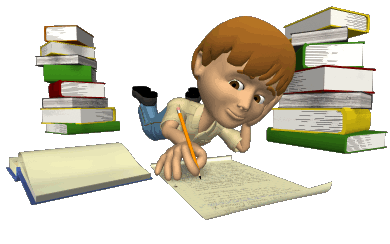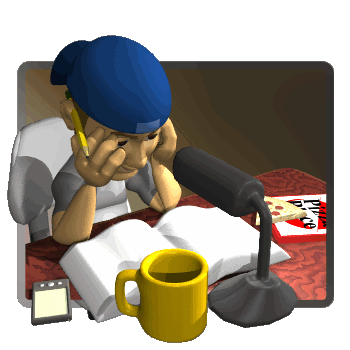In a late-night tweet, physics teacher, colleague, friend and education reformer Frank Noschese questioned his exploration of the Khan Academy, in line with his recent work on the coined term “pseudoteaching,” developed jointly with John Burk. According to Noschese and Burk:
Pseudoteaching is something you realize you’re doing after you’ve attempted a lesson which from the outset looks like it should result in student learning, but upon further reflection, you realize that the very lesson itself was flawed and involved minimal learning.”
In many ways, recognizing pseudoteaching can be perceived as “trolling” or casting a negative light on the work of others, therefore such explorations must be waded into carefully and with tact in mind. Further, as Burk is quick to point out in the pseudo-teaching FAQ,
“We think pseudoteaching is something best discovered by oneself. And there’s something about glass houses and stones.”
The key point in the definition of pseudoteaching is that the lesson results in minimal learning. In many cases, the lesson itself may be flawed, but it’s also important to realize that the flaw may be in the lesson’s application to the specified audience, not the lesson itself.
As educators, I’m sure we all realize that entire classes, as well as individual students, have widely varying personalities. My AP-C class loves Walter Lewin’s OCW lectures, and have reported that they learn best when given a set of resources (textbook chapters, practice problems, and references to specific Lewin lectures) and allowed to explore and work through the material at their own pace. And their scores prove this out! Yet, when Lewin delivered these lectures at MIT, Noschese reports in his Action-Reaction Blog that “attendance at his physics lectures fell 40% by the end of the term and an average of 10% of students failed Mechanics and 14% failed E&M.”
 So why was this successful with my AP-C students? I would surmise that after an entire year of working with the students, building independence, and teaching them how to actively teach themselves, they’re finally becoming comfortable with reading a technical textbook for understanding. They know how to actively listen to Lewin’s lectures, and they watch the lectures as a team, pausing, working through the practice problems themselves, discussing connections to the over-arching concepts – in short, they’re turning a passive learning experience into an active learning experience that works for them.
So why was this successful with my AP-C students? I would surmise that after an entire year of working with the students, building independence, and teaching them how to actively teach themselves, they’re finally becoming comfortable with reading a technical textbook for understanding. They know how to actively listen to Lewin’s lectures, and they watch the lectures as a team, pausing, working through the practice problems themselves, discussing connections to the over-arching concepts – in short, they’re turning a passive learning experience into an active learning experience that works for them.
Providing the same materials to my 9th period Regents Physics class, however, would have considerably less than stellar results. Is the lesson itself flawed? No, the lesson itself has its time, place, and audience. The application of the lesson to the appropriate audience, however, is key to success.
In the same way, I believe the Khan Academy videos, flipped classroom strategies, and similar offerings all have value when used appropriately and with the right audience. I wouldn’t begin to teach a course in physics where the entire year was spent watching videos, then expect students to have a full and complete understanding at the end of the year. Rather, I would expect this to be a disaster. However, using videos as a resource to introduce or reinforce concepts or applications, in conjunction with active learning methods, student inquiry and exploration activities, would likely merit much stronger consideration.
As another example, the Regents Physics review book I’m finishing up, APlusPhysics: Your Guide to Regents Physics Essentials, is designed as a guide to performing well on the standardized NY Regents Physics Exam. It reinforces standardized physics problem solving in line with a specific test. By itself, I would certainly NOT recommend it for use as a classroom’s primary text, much like I wouldn’t propose an SAT review book in lieu of an entire high school student’s curriculum. These can be valuable resources, however, when used appropriately for the appropriate audience and in conjunction with other resources.
Physics education, and indeed, a vast majority of substantive topics in our world, aren’t black and white. What is valuable and effective in certain circumstances may be considerably less effective in others. Pseudoteaching, therefore, may not always be indicative of a flawed lesson, but in some cases, may be indicative of delivering a strong lesson to the wrong audience in the wrong circumstances.
What makes Noschese’s work so valuable to the physics education community is his willingness to take risks and question everything, including his own work. His late-night tweet questioning his previous comments is profound in that it highlights his ongoing self reflection. It is this ongoing process of assessing the status quo, implementing changes based on that assessment, and then critically examining the results to repeat this loop that is the foundation of authentic growth. Isn’t this, in effect, the basis of our scientific method? These questions we’re discussing and debating have no simple answers, and no absolutes. As long as we continue to question ourselves, open our minds to alternative thoughts and methods, and take appropriate risks to try new pathways, our teaching will continue to grow, evolve, and most importantly, improve.


